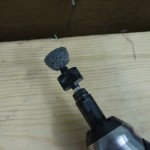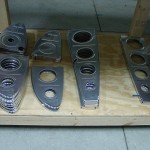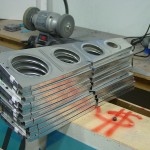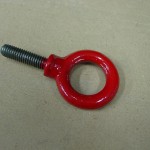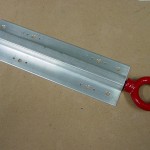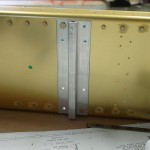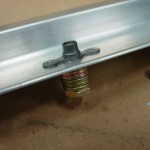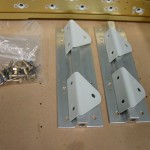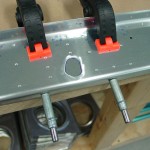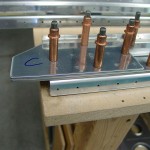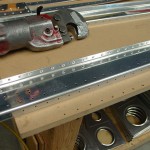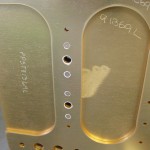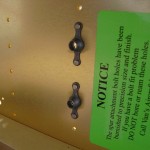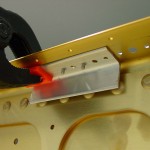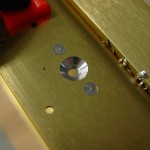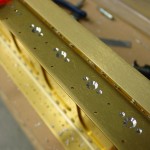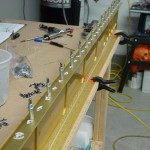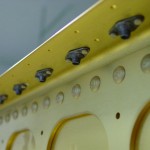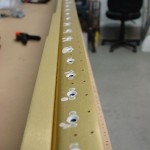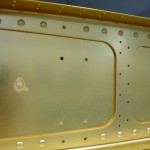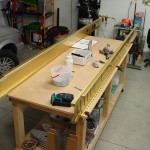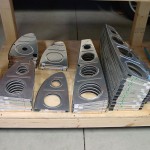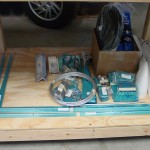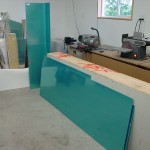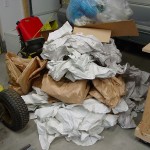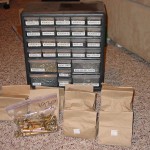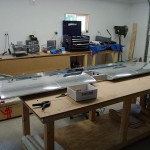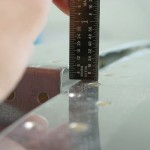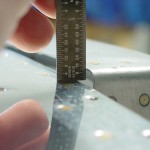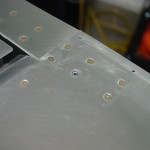Wing ribs & tie-down bars
Allison put in another hour on the bench grinder, helping to debur wing ribs. We’ve made it through more than half the stack — only the large pile of main ribs remains. Taking a cue from the mini-scotchbrite tool that can be made for the Dremel, I came up with a handy item for deburring the inside flanges of the ribs, especially the little finger bits on the leading edge nose. I used the top half of a 1″ scotchbrite wheel that had split in half, fit it to the screw mandrel in the die grinder, and shaped it into a wide taper profile by turning it against the 6″ wheel on the ginder. Just like the Dremel method, on a larger scale. The secret is that after it’s shaped, unscrew it and put it back on upside down–so the wide part is at the top, tapering inward toward the body of the grinder. I found this profile worked extremely well for deburring rib flanges, as it allows you to get the “cutting edge” into the bend radius; then you can raise or tip the grinder to debur the slots. You can also use the blunt end of the wheel for deburring tooling holes and such, like the vent line holes on the tank ribs. I still used the Dremel device for the corner slots, as the die grinder tool is too big to fit in there.
Shipment from Cleaveland Tool arrived this afternoon with new abrasive supplies, and tie-down parts. I ordered their set of pre-tapped tie-down bars and power-coated rings–I had made a harmless goof in the fabrication of the tie-down bars and this gave the chance to fix it. (Be sure which side of the spar is the top side when bolting the match hole in the extrusion…I put them both upside down, which didn’t look like it would be a big deal, it just means the threads would be recessed a bit farther into the wing than intended. The part I wasn’t sure about was whether the tie-down rings would be able to bottom out, and thus tighten, in the threads before starting to rub on the wing skin.) In any event, I would have bought the nice red forged rings eventually anyway, so this presented the opportunity to get all that and finx my little oops, plus it means I don’t have to buy a tap-and-die set (which would end up being an extra when I eventually figure out a way to move tools down from home), which probably saves something in the long term anyway. I’m happy.
I have been enjoying Bob Collins’ Oshkosh coverage, as I’m not able to make it over this year, due to work schedule (someone decided we needed a motivational-speaker “retreat” on one of the days I had hoped to use for OSH), plus unexpected expenses arising from the storm damage.
Hours: 3.4 | Posted in Spars & Skeleton | Comments Off
